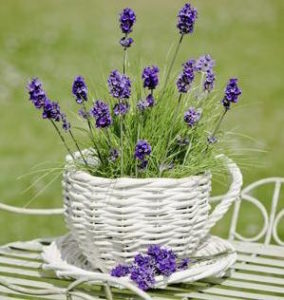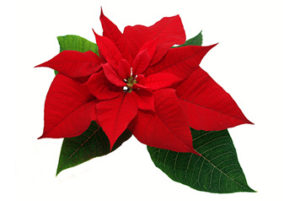by Susan Dean | Feb 5, 2018 | Plants

APPLES There are no apples native to America. Apples date back to the prehistoric times. The first apples were small walnut size crabapples growing in Asia and Europe. It is America’s oldest cultivated fruit. Julius Caesar liked plants and ordered his soldiers to plant many apple trees. They were the “Stamp of Rome” and a symbol of Roman occupation.
Apples come from trees and are a fruit because it has seeds. Apple trees are hardy and without a lot of care, they grow. France grows the most apples and America is second. Apple trees grow in almost every state but Florida. They don’t grow in tropical climates or the Arctic. They like cool climates with plenty of sunshine and abundant rainfall. They can grow to be 25 feet tall and there are lots of them today that are over 100 years old. Apple trees require cross-pollination. They are the hardiest of all fruits. If flower buds are open, a frost will kill the flowers and you will have no fruit. The apple tree will drop the apples that it cannot support.
William Blackstone arrived in Boston in 1623 with bibles and a bag of apple seeds. Apples fed horses and cows too. As America grew, so did apple trees! Pioneers drank a lot of cider, liquid pressed from apples because water was often contaminated from washing.
John Chapman better know as Johnny Appleseed was a peaceful man born in Massachusetts in 1774, 150 years after William Blakestone arrived in Boston and he was responsible for planting many apple trees. He planted the apple seeds he collected from cider milk and hiked the Ohio River Valley and sold trees to settlers for 6 ½ cents each.
One of my favorite apples is the granny smith. There really was a Granny Smith. About 100 years ago Margaret Smith from New South Whales, Australia brought home some apples from Tasmania. She threw the rotten one out in her garden and seedlings grew and people starting calling the apples Granny Smiths apples!
Apples can be grown in the home garden with little care. There are many varieties and sizes and colors. The trees are host to a variety of songbirds. Apples have a good storing power and were often the only fruit in winter. Apples were dried in the summer sun and stored in cotton bags. There are many uses for apples in pies, cakes, bread, applesauce, and for juice or cider (which is fermented apple juice.) Apples contain vitamin C, A, and potassium. The old saying is “An apple a day keeps the doctor away.” Apples orchards are sprayed with pesticides heavily 7 or 8 times a season. It is best to eat apples that are organically grown. Our bodies store pesticides. They are not eliminated from our body and are a health risk.
A long time ago if a fellow tossed an apple to a girl, he was asking her to marry him. If she caught it she accepted. If you peeled an apple without breaking the peeling, twirled it around your head 3 times and threw it over your shoulder onto the floor it would form the initial of your future spouse. If you break the peal it was bad luck. Sometimes children would play “snap apple” by tying an apple in the doorway by its stem and someone would try to bite the swinging apple. Sometimes they would put an apple in a bucket of water and have you bob for the apple. People even dried apples and made apple dolls!
Apple activities: A teacher might give each student an apple to eat and have them count the seeds in each after they finish. Do they have the same number of seeds? They could graft the results. They might compare different types of apples. Draw an apple tree. Make a felt board apple tree and turn it into a math lessons. If I pick 3 off the tree and you pick the other 7 then how many apples were there in all? If you gave me 4 how many would I have. Slice a couple of apples across, notice the star in the center that is made by the ovary and contains the seeds. Make apple prints on cards or wrapping paper for Christmas time. Tell stories and eat them! Talk about nutrition and about what happens to the apple when you eat it! Introduce the digestive system. Plant an apple tree! Sort laminated apples of different sizes/colors. Have students place different size apples in different baskets, make apple patterns or make sets of apples with matching numbers or letters for your students to match. Cut an apple in halves and fourths and use to teach fractions. Use the letters in the word apple to make other words such as, pal, lap, sap, ape, pea, sea, spa, slap, pals, apes, peas, apple, apples. Johnny Appleseed is remembered for his generosity to people and his respect for nature. Ask students to share ways they have shown generosity to others or respect to nature. Let students trace their hand on a sheet of paper and color it brown (the trunk of the tree and the fingers are branches.) Let them use green tempera paint and sponges to paint the leaves on the tree and use a Q-tip and red tempera paint to put the apples on the tree. Use apples and compare it to the layers of the earth. The middle core of the apple is the core of the earth. The outer core is the mantle, which is the part we eat. The peel is like the outer layer or crust. “How about them apples!”
by Susan Dean | Feb 5, 2018 | Plants

1. White Jasmine enhances sleep, reduces anxiety, and smells heavenly.

2. English Ivy soaks up toxins in the air and puts out more oxygen at night.
It is the best for improving the quality of air and reduces air born mold by 94%.

3. Lavender reduces anxiety and stress and slows the heart rate down.
You can use the essential oil or put a plant in the room.

4. Aloe puts out a ton of oxygen at night.

5.Snake plants put out a lot of oxygen at night and improve the air quality.
by Susan Dean | Feb 5, 2018 | Plants

The poinsettia, part of the Spurge family, is known as Euphorbia pulcherrima, translated it means “very beautiful.” Many plants in the Euphorbiaceae family ooze milky sap.
It has a single female flower, without petals and usually without sepals, surrounded by individual male flowers enclosed in a cup-shaped structure, the cyathium. The showy red, pink, white, or bi-colored portion of the plant referred to as the flower, are modified leaves or bracts. Poinsettias are not poisonous.
The poinsettia is indigenous to Mexico and derives its common name from Joel Roberts Poinsett, the first United States Minister to Mexico, who introduced the plant to the US in 1825. Poinsett, a botanist, had some plants sent to his home in Greenville, South Carolina, where they did well in his greenhouse, and he distributed plants to botanical gardens and horticultural friends. In Mexico the poinsettia is a perennial shrub that will grow 10-15 feet tall.
The plant’s association with Christmas began in 16th-century Mexico. The legend tells of a girl, called Pepita or Maria, who was too poor to provide a gift for the Jesus’ birthday celebration. Inspired by an angel, she gathered weeds from the roadside and placed them in front of the church altar. Crimson blossoms sprouted from the weeds and became poinsettias. Since the 17th century Franciscan friars in Mexico have included them in Christmas celebrations. The star-shaped leaf symbolizes the Star of Bethlehem and the red color represents the blood of Jesus.
December 12th is Poinsettia Day, marking the death of Joel Roberts Poinsett in 1851.
The poinsettia was a symbol of purity to the Indians. The Aztecs used the plant to produce red dye and as a fever reducer. The plant is known in Mexico and Guatemala as “”La Flor de la Nochebuena” (Flower of the Holy Night).
The poinsettia is the most popular holiday flower and the number one flowering potted plant in the United States. For the longest-lasting poinsettias, choose plants with little or no yellow pollen showing. Poinsettias are not frost-tolerant but will grow outdoors in temperate coastal climates,
To prolong the life of this Christmas plant, avoid hot or cold drafts, keep the soil moist not soggy, and place in a room with sufficient natural light and temperatures around 60 to 70 degrees F. Water when soil begins to dry. Once leaves wilt too far, it’s too late. Poinsettias are highly sensitive to cold temperatures and a few minutes of exposure to 50-degree F or lower temperatures will cause them to wilt.
by Susan Dean | Feb 5, 2018 | Plants
“The fragrance, color, and form of the whole spiritual expression of Goldenrod are hopeful and strength-giving beyond any others I know. A single spike is sufficient to heal unbelief and melancholy.” John Muir

Goldenrod owes its reputation to its ruggedness and adaptability! It grows where soil is dry and sunlight plentiful and crops up where other plants can’t grow and thrive despite drastic changes in landscape. After a forest fire, it is often one of the first signs that woods are coming back to life.
The colonists called goldenrod tea “Liberty Tea,” for they drank it instead of black tea after the Boston Tea Party.
All species of goldenrod are safe and beneficial and are used to boost the immune system for winter.
Some of the medicinal uses are:
Cold and flu relief
Colic and gas relief
Lowers fever
Powdered Goldenrod root helps heal wounds
Goldenrod Vinegar helps prevent kidney stones, improves immune functioning, and helps with other kidney and bladder issues.
Improve mineral balance.
Blue mountain tea made from goldenrod leaves is sometimes used to combat fatigue in the Appalachian Mountain region.
Increases the flow of urine (as compared to a diuretic, which promotes loss of water and electrolytes)
Potent anti-allergic herb for sufferers of hay fever
Goldenrod is considered well tolerated due to its lack of side effects and contraindications. Goldenrod is not used as a cure for any of these disorders, but it can be a helpful component of treatment. Drink 6–8 glasses of fluids a day while using goldenrod to increase its effectiveness as a diuretic.
Goldenrod is used widely in Europe to treat urinary tract infections and help eliminate kidney or bladder stones. It is a flushing-out therapy for inflammatory diseases of the lower urinary tract and for helping to eliminate and prevent stones. It is considered useful in treating these disorders for several reasons. The herb helps eliminate bacteria and stones by increasing the flow of urine and “washing” them out and it soothes irritated tissue in the urinary tract and prevents muscle spasms.
Harvesting Goldenrod: Harvest top third of plant in full flower, shake to remove visitors, rinse and shake again, bundle 2-3 stems together and hang in a shady spot to dry completely! Remove dry flowers and leaves and store in a paper bag or jar.
Goldenrod : Put two handfuls of crushed dried goldenrod in a quart of hot water and steep for thirty minutes. Tea can be used to counter allergies (especially pollen), fevers, sore throats, coughs, colds and flu; take cold to relieve colic in babies or gas in adults. Dosage is two to four cups/day, between meals. Mint and yarrow are tasty additions.
Goldenrod Vinegar:
Chop goldenrod coarsely, filling a jar with chopped flowers, leaves, and stalks. Fill the jar to the top with, pasteurized, room-temperature apple cider vinegar. Seal with a plastic lid. (Metal lids are eroded by vinegar.) Label with date and contents. Ready to use in six weeks.
Goldenrod tincture:
Fill a jar with coarsely chopped flowers, leaves, and stalks and add 100 proof vodka, filling jar to the top. Seal and label jar. Ready to use in six weeks. by the droppers full, as an anti-inflammatory, a sweat-inducing cold cure, and an astringent digestive aid. Medical herbalists use up to 4 full droppers several times daily to treat kidney problems including nephritis, hemorrhage, kidney stones, inability to void, and prostate problems, including frequent urination.
by Susan Dean | Feb 5, 2018 | Plants

The Christmas Cactus
Some love the holidays because it’s when Christmas cacti bloom! It is very low maintenance and so easy to propagate. After flowers fall take a clipping. The cactus grows in humid tropical jungles. When you take a clipping, create humidity around it for optimal growth, by using a mason jar. It loves diffused light, frugal watering, and well-draining soil. The new plant may bloom within months of clipping. This cactus blooms twice a year, in spring and in fall from a limited sun exposure.
To take a cutting, make sure there are at least two of sections to start a new plant. Twist at a joint to remove from the mother plant. Leave the cutting on a plate or windowsill with diffused sunlight to scab over for one day before planting to keep the stem from sucking too much water from soil and rotting. When it is dry on the cut end, place in a pot with moist loose well-draining soil. Put a quarter of the cutting beneath the surface. Place it in a window but avoid direct sunlight. Let soil go almost dry between watering. Cover the cutting with a jar to generate humidity. After two to three weeks the propagated Christmas cactus will show signs of new growth.
by Susan Dean | Feb 5, 2018 | Plants

Check out a few leaf scars when exploring. They come in many sizes and shapes! Some of them look like little monkey faces. This little heart or you could see it as an angel is one of my favorites from the Tree of Heaven.


Click on the links below to access pages:
The Christmas Cactus
Milkweed
Red Spider Lily
Goldenrod
The Poinsettia
Herbal Activities With Kids
Best Indoor Plants for Oxygen and Sleep
Apples
The Pumpkin
History of Halloween and the Jack-O-Lantern
How Some Plants Grow
Plant Classification
Introduction to Plants
Plant Summary
Plants on Our Plate
Food for Thought: Grains
Roots and Leaves
More About Roots
What is a Bulb?
PLanting Bulbs
Seeds
The Soil
Trees
Coconuts
The Sweet Potato
Poison Ivy and Poison Oak
Potatoes
Passion Flower
Growing Garlic
Trees Every Survivalist Should Know
Symmetry in Plants
A big thank you to Courtney Phillips class for the following great resource on photosynthesis!
Click here to play an interactive game that illustrates the different functions of flower parts and how they relate to the life cycle.
The Skeleton Flower, a white woodland blossom whose petals turn crystal clear when they make contact with water. Diphelleia grayi, the scientific name of the Skeleton Flower, can be found in only three parts of the world. The plant grows on moist, wooded mountainsides in colder regions of Japan, China and the Appalachian Mountains in the United States, and is instantly recognizable by its large, umbrella-like leaves. When the leaves dry out, they turn back to being white.

 Something quite interesting….Hot lips, Psychotria Elata | Amazing Flower!
Something quite interesting….Hot lips, Psychotria Elata | Amazing Flower!
Affectionately known as Hot lips, Psychotria elata with it’s colorful red flowers attracts many pollinators including butterflies and hummingbirds. One of the host plants for the golden silkmoth (Xlophanes adalia). Known in some circles as Mick Jagger’s lips. Native to Tropical America, this specimen was found at the Butterfly Gardens in Manuel Antonio, Costa Rica.

Seaweed

Air Bladders on Water Plants David Jones
















 Something quite interesting….Hot lips, Psychotria Elata | Amazing Flower!
Something quite interesting….Hot lips, Psychotria Elata | Amazing Flower!


